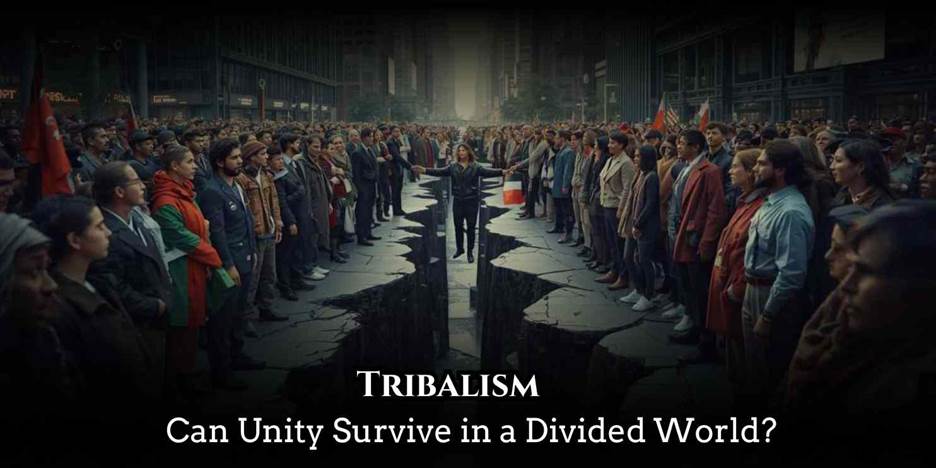In today’s rapidly changing world, tribalism has reemerged as a defining force that shapes social behavior, politics, and community identity. While it once symbolized kinship and belonging, modern tribalism often fuels division, creating invisible walls between groups and undermining collective progress. This article explores the impact of tribalism on social cohesion and examines whether unity can truly survive in a divided world. We’ll delve into its origins, benefits, and the challenges it poses to modern societies, highlighting real-world examples that demonstrate its double-edged nature. By the end, readers will gain a deeper understanding of how tribalism influences human interaction and what steps can be taken to transform group loyalty into a force for unity rather than division.
Table of Contents

Understanding Tribalism: The Roots of Group Loyalty
Tribalism originates from humanity’s earliest need for survival and belonging. In ancient societies, small tribes provided safety, identity, and shared values essential for cooperation. This instinctual loyalty helped humans form strong communal bonds, ensuring that members worked together for collective well-being.
Today, the same instinct persists, but in modern contexts such as politics, religion, sports, and social media. Instead of uniting small tribes for survival, tribalism often manifests as competition between ideologies and social groups. Although it still satisfies our desire to belong, it can also intensify “us versus them” mentalities, threatening broader social cohesion.
Key takeaway: Understanding tribalism’s roots helps explain why people gravitate toward like-minded groups even when it fosters division.
The Positive Side of Tribalism: Unity Within Diversity
Despite its divisive reputation, tribalism also has positive aspects. It fosters:
•A strong sense of identity and belonging
•Group solidarity that strengthens emotional support networks
•Motivation for collective action and social progress
In many communities, tribalism helps preserve cultural traditions, languages, and values. For example, indigenous tribes use their unity to protect ancestral lands and heritage. Similarly, fan communities or activist movements channel their shared identity to bring about social or environmental change.
When balanced with inclusivity and empathy, tribalism can promote unity within diversity, empowering people to stand together for shared goals rather than separate over differences.
The Dark Side of Tribalism: Division and Conflict in Society
The same force that binds groups can also tear societies apart. Modern tribalism often thrives on exclusion, fear, and misinformation. When loyalty to one’s group outweighs empathy for others, it leads to prejudice, political polarization, and even violence.
Examples include:
•Political divisions where citizens see opposing parties as enemies rather than fellow citizens
•Online communities that reinforce echo chambers, amplifying misinformation
•Religious or ethnic conflicts where tribalism fuels hate and discrimination
This darker side of tribalism can weaken national unity, erode trust, and make societies more vulnerable to manipulation by leaders or media seeking to exploit division for power.
Tribalism in the Digital Age: Social Media and the Echo Chamber Effect
In the era of instant communication, digital platforms have amplified tribalism more than ever. Algorithms prioritize content that confirms users’ beliefs, trapping individuals in echo chambers where only similar opinions are heard.
This digital tribalism creates virtual “tribes” that thrive on outrage and emotional reactions. Instead of bridging differences, online platforms often deepen them. As people retreat into their ideological bubbles, empathy declines, and misinformation spreads.
Still, digital platforms also have the potential to reverse this trend. When used responsibly, they can connect diverse groups, encourage dialogue, and promote understanding across boundaries.
How Tribalism Affects Social Cohesion and Unity
Social cohesion depends on trust, inclusion, and shared purpose. However, tribalism undermines these foundations by promoting division and hostility between groups. When people identify more with their tribe than the larger society, collective cooperation weakens.
Effects of tribalism on social unity include:
1.Loss of mutual trust and respect
2.Increased polarization and societal fragmentation
3.Reduced willingness to compromise or collaborate
4.Erosion of national and global solidarity
To preserve unity, societies must find ways to balance group loyalty with a sense of shared humanity.
Can Unity Survive in a Divided World? Lessons and Solutions
Despite global divisions, unity can endure if societies take intentional steps to manage tribalism constructively. Promoting empathy, education, and intercultural dialogue can transform tribal identities into sources of collaboration rather than conflict.
Possible solutions include:
•Encouraging open discussions that respect differing viewpoints
•Developing inclusive policies that value diversity
•Fostering civic education emphasizing shared responsibility
•Using media literacy to counter misinformation and stereotypes
Ultimately, the survival of unity depends on our willingness to rise above narrow allegiances and embrace the broader identity of a shared human tribe.
Real-World Examples: From Division to Connection
Some nations and organizations have successfully turned tribalism into a force for positive change. South Africa’s post-apartheid reconciliation, led by Nelson Mandela, emphasized forgiveness over revenge, showing how compassion can heal tribal wounds. Similarly, Rwanda’s unity programs after the 1994 genocide demonstrate that inclusive governance can rebuild fractured societies.
These examples prove that even in the face of deep division, the human spirit is capable of rebuilding trust and restoring social harmony through collective effort and understanding.
Conclusion
Tribalism will always be part of human nature it satisfies our instinct to belong and connect. Yet, when it overshadows empathy and inclusiveness, it threatens the social fabric that binds us. To ensure unity survives in an increasingly divided world, individuals and leaders must transform tribalism into a bridge rather than a barrier. By embracing shared humanity over narrow identity, societies can cultivate stronger, more compassionate communities that thrive on cooperation instead of conflict.
Pingback: Tribalism in Modern Society: How Group Loyalty Influences Behavior and Beliefs - Blog Bullion